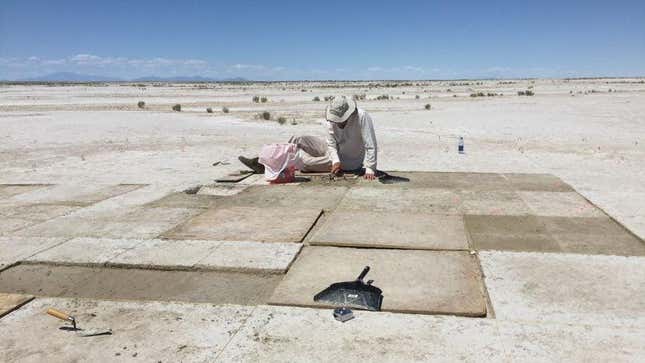
In the summer of 2015, a team of archaeologists in Utah found duck bones and charred plant matter just beneath the ground, in an arid stretch of northwestern Utah now known as the Wishbone site. The team realized it was an open-air hearth, some 12,000 years old, and now the same group has reported their discovery of tobacco seeds on the site. If corroborated, the find would become the oldest known evidence of people using tobacco.
Several small charred seeds were found near the hearth, among thousands of bone and egg fragments, stone tools, and other plant matter. The hearth site is on the eastern end of the Great Basin; though arid today, it was once marshland (hence the duck bones), near where an ancient river once flowed. When the river dried up, the research team suspects, the people moved on. The team’s research is published today in Nature Human Behavior.

“The people who camped at Wishbone were highly mobile, which we know from chemical analysis of their stone tools,” said Daron Duke, an archaeologist with the Far Western Anthropological Research group and lead author of the study. “They moved hundreds of kilometers, probably seasonally/annually,” Duke wrote in an email. “The nearest natural habitat for the species of tobacco found at the Wishbone site is 13 km [8 miles] away, but for these people, they may well have collected it elsewhere/farther away and had it as part of their transportable kit.”
The people who consumed the tobacco at Wishbone were likely affiliated with the Western Stemmed Tradition, Indigenous peoples that lived in the area at the turn of the Holocene. Today, the site sits in Goshute territory, west of the Great Salt Lake. Because of the geographical footprint of the plant matter found by the hearth, the researchers believe the people who left them there were prolific travelers.
Long before the age of Big Tobacco, the plant had a hold on humanity. Evidence for tobacco cultivation and consumption is found all over the Americas. Multiple species of tobacco plant were smoked, of course, but parts of the plant, called quids, were also chewed or sucked. The tiny seeds that people came across by chewing quids would be spat out, perhaps tossed into ancient hearths. That ancient people would seek out the effects of nicotine should be no surprise, given that humans have been dabbling in psychoactive substances for many, many millennia, if the archaeological record is to be believed.
In 2018, a different team of archaeologists in Alabama found evidence of tobacco in a pipe dating to around 3,600 years ago. Depending on how the recent team’s evidence is interpreted, it could become the oldest such evidence by thousands of years. As impressive as the new date is, it’ll take more research to ferret out the true use of the tobacco at the Wishbone site.